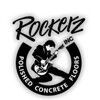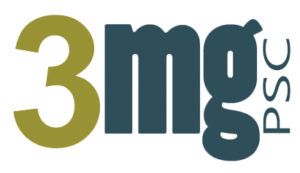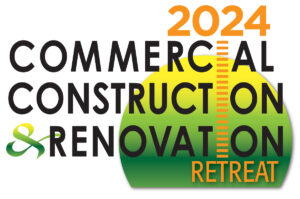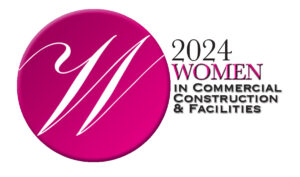Traditional concrete has been a building material staple for decades if not centuries. It has remained essentially the same with minor improvements in manufacturing techniques and the forms it is available in. Honed concrete, a more refined version, can be purchased by the truckload to pour into forms or for creating bricks, tiles, slabs, and building blocks.
The rest of the concrete can be purchased in paper form for landscape designs or by the truckload to make patio foundations, walking paths, and more. Concrete can form swimming pools, paths, and any size commercial buildings. Concrete can be used in the building of roads and bridges. But, it can be vulnerable to earthquakes and other catastrophic climate events. For contractors working with such projects, site plans for contractors are an essential part of ensuring that the correct materials and designs are selected for their concrete applications.
What is Flexible Concrete?
Traditional concrete is made with water, aggregates, air, and Portland cement. The Portland cement is in powder form and acts as the bonding agent to hold the water and aggregates together when the ingredients are properly mixed. The paste formed by the Portland cement and water coats the aggregates, and a chemical reaction called hydration takes place, causing the mixture to harden into a rock-like substance or mass known to us as concrete. The lifetime of concrete is from 30 to 100 or more years depending on several factors and can use a Concrete Calculator too for accuracy.
Factors affecting how long concrete construction materials last include the quality of the concrete mixture, the construction methods, and the environmental conditions it must withstand. The quality and strength of concrete depend on proper proportioning and mixing of the ingredients. A good mix of ingredients is composed of 10% to 15% cement, 60% to 75% aggregate, and 15% to 20% of water. There will be about 5% to 8% entrapped air in the mix. The concrete is used with reinforcing steel rods to add strength and stability. One advantage of concrete that may be overlooked is that concrete gains strength as it ages.
Flexible concrete was developed at the University of Michigan by engineering professor Victor Li. It was developed to be used in earthquake-prone areas around the world such as Japan and Korea. This new form of flexible concrete helps buildings be earthquake-proof, enables roads and bridges with fewer potholes and cracks, and allows other uses where the concrete must be flexible to last longer. This flexible or engineered concrete can be used by engineering services to build commercial projects using traditional methods.
Flexible concrete is different than traditional concrete in that it has polyvinyl alcohol fibers and very fine silica sand instead of course aggregate. Other fibers such as silica fibers, glass fibers, steel fibers, and asbestos fibers can be used. These micro-fibers give the new concrete its flexibility. In addition, a slick coating or anti-frictional coating is used to reduce friction between the fiber particles in the cement. This helps eliminate cracks and make the concrete flexible. The concrete can also contain latex, lignin, melamine, polycarbonated ether, lignosulphonate, or other superplasticizers to improve workability and flexibility.
The Advantages of Using Flexible Concrete
Engineering services might specify this more-expensive flexible concrete in projects it will benefit. These benefits might include:
- Being as flexible as a metal. Flexible concrete is up to 500 times more flexible than traditional concrete
- Flexible concrete is stronger, longer-lasting, and more durable than conventional concrete
- Engineered concrete is not as brittle as conventional concrete
- There is more resistance to cracking. This represents cost savings with fewer repair bills and a longer lifespan
- Flexible concrete has a self-healing property using rainwater and carbon dioxide
- Flexible concrete can be 20% to 40% lighter than conventional concrete
- Though this concrete is more expensive initially, it can reduce the total cost of the project. Flexible concrete can cost as much as three-times what traditional concrete costs.
- Flexible concrete requires less steel reinforcement. Flexible concrete allows architects and engineers to create freer forms and shapes in building projects. It has many design benefits in designing and building skyscrapers
- It is believed that flexible concrete emits fewer harmful gasses than its traditional concrete counterpart
- Flexible or engineered concrete can be used as precast concrete
- The strain capacity of this building material can be up to 300 times higher than conventional concrete, which is why it is flexible
There Are A Few Disadvantages of Flexible Concrete
Like any building product flexible concrete has limitations that must be considered.
- Flexible concrete installation requires labor skilled in its use
- The cost of the concrete is higher
- The materials required to make flexible concrete may more difficult to obtain
- The quality of flexible concrete depends on the quality and proportion of materials used and the atmospheric conditions where and when it is made
- It has slightly less compressive strength than traditional concrete
Flexible Concrete Application Possibilities
The new flexible or engineered concrete has several promising applications. Flexible concrete can be used for roads and bridges to eliminate the use of expansion and contraction joints. The reason for this advantage is the ability to change shape. These roads and bridges resist cracking and the formation of potholes and may last years longer with less maintenance. Flexible concrete can be made into lighter-weight precast pavement slabs that can replace damaged slabs in a plug-and-play installation requiring less time and labor.
The construction of earthquake-resistant buildings has become more and more important. The flexibility of this engineered concrete allows it to take added tensile stresses. Buildings constructed with this flexible concrete can resist the high vibration caused by earthquake forces. Engineered, bendable, or flexible concrete can be tailor-made for specific projects specified by engineers or architects. So, custom concrete will be produced to fit the needs of the building under construction. Public and private buildings can be constructed to withstand the forces of earthquakes and possibly save many lives. This flexible concrete also makes innovative design shapes more possible in construction of large buildings. Buildings can be beautiful and well as earthquake resistant.
There are military uses for flexible concrete such as concrete canvas that is highly durable and strong. This can make protective umbrellas for military equipment and soldiers.
Flexible concrete may not be the choice for all concrete projects, but it offers many advantages for the uses it is designed for. This is a product that will be worth watching in the future.











 The 2024 virtual Men’s Round Table will be held Q4, 2024, date TBD.
The 2024 virtual Men’s Round Table will be held Q4, 2024, date TBD.













